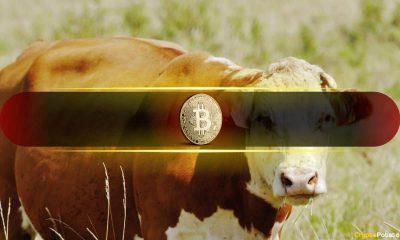Economy
Fed’s BARR Defends ‘Basel Endgame’ Proposal, Citing Need for System Resilience


Fed Vice Chair for Supervision, Michael Barr, defended the “Basel Endgame” proposal at the American Bankers Association conference on Monday. The proposal, designed to modify how banks calculate necessary capital reserves to safeguard against losses, reflects international standards established by the Basel Committee on Banking Supervision in response to the 2007-2009 financial crisis.
Barr argued that bolstering capital requirements for large banks would enhance the financial system’s resilience to unexpected stress. He emphasized that this would not harm lenders’ profitability or their market value in the long term. According to Barr, the increase in capital requirements related to lending forms a minor part of the overall capital augmentation, leading to an increase in funding costs by just up to 3 basis points. He attributed this rise primarily to trading and other operations that have historically resulted in outsized losses.
The banking sector has expressed concerns that the proposal could negatively impact mortgage borrowers, green project financing, and the broader economy. Barr contends that strong capital reserves are crucial for lenders to weather economic downturns and unforeseen risks. He pointed to Silicon Valley Bank’s recent failure as evidence of the need for system reinforcement.
In the context of Silicon Valley Bank’s failure, it’s worth noting some insights from InvestingPro. The bank, known by its ticker SLAB, has been experiencing some financial setbacks. According to InvestingPro data, SLAB has seen a significant drop in its price over the last three months (-25.59%), and even more so over the last six months (-31.44%). This suggests a significant loss of investor confidence.
Moreover, the InvestingPro Tips reveal that analysts anticipate a sales decline for SLAB in the current year, and its revenue growth has been slowing down recently. The bank also does not pay a dividend to shareholders which might make it less attractive to some investors. On the brighter side, SLAB holds more cash than debt on its balance sheet, and its liquid assets exceed short-term obligations, indicating a strong financial position despite the recent setbacks.
Fed Chair Jerome Powell has voiced support for the proposal but has also indicated a willingness to listen to feedback and concerns. Isaac Boltansky of BTIG sees this situation as a test of Barr’s policymaking freedom in his supervisory role.
For those interested in a deeper dive into the financial metrics and investment tips for SLAB or any other company, consider subscribing to InvestingPro. It provides real-time metrics and a plethora of valuable tips to guide your investment decisions.
This article was generated with the support of AI and reviewed by an editor. For more information see our T&C.
Economy
Russian central bank says it needs months to make sure CPI falling before rate cuts -RBC


© Reuters. Russian Central Bank Governor Elvira Nabiullina attends a news conference in Moscow, Russia June 14, 2019. REUTERS/Shamil Zhumatov/File Photo
MOSCOW (Reuters) – Russia’s central bank will need two to three months to make sure that inflation is steadily declining before taking any decision on interest rate cuts, the bank’s governor Elvira Nabiullina told RBC media on Sunday.
The central bank raised its key interest rate by 100 basis points to 16% earlier in December, hiking for the fifth consecutive meeting in response to stubborn inflation, and suggested that its tightening cycle was nearly over.
Nabiullina said it was not yet clear when exactly the regulator would start cutting rates, however.
“We really need to make sure that inflation is steadily decreasing, that these are not one-off factors that can affect the rate of price growth in a particular month,” she said.
Nabiullina said the bank was taking into account a wide range of indicators but primarily those that “characterize the stability of inflation”.
“This will take two or three months or more – it depends on how much the wide range of indicators that characterize sustainable inflation declines,” she said.
The bank will next convene to set its benchmark rate on Feb. 16.
The governor also said the bank should have started monetary policy tightening earlier than in July, when it embarked on the rate-hiking cycle.
Economy
China identifies second set of projects in $140 billion spending plan


© Reuters. FILE PHOTO: Workers walk past an under-construction area with completed office towers in the background, in Shenzhen’s Qianhai new district, Guangdong province, China August 25, 2023. REUTERS/David Kirton/File Photo
SHANGHAI (Reuters) – China’s top planning body said on Saturday it had identified a second batch of public investment projects, including flood control and disaster relief programmes, under a bond issuance and investment plan announced in October to boost the economy.
With the latest tranche, China has now earmarked more than 800 billion yuan of its 1 trillion yuan ($140 billion) in additional government bond issuance in the fourth quarter, as it focuses on fiscal steps to shore up the flagging economy.
The National Development and Reform Commission (NDRC) said in a statement on Saturday it had identified 9,600 projects with planned investment of more than 560 billion yuan.
China’s economy, the world’s second largest, is struggling to regain its footing post-COVID-19 as policymakers grapple with tepid consumer demand, weak exports, falling foreign investment and a deepening real estate crisis.
The 1 trillion yuan in additional bond issuance will widen China’s 2023 budget deficit ratio to around 3.8 percent from 3 percent, the state-run Xinhua news agency has said.
“Construction of the projects will improve China’s flood control system, emergency response mechanism and disaster relief capabilities, and better protect people’s lives and property, so it is very significant,” the NDRC said.
The agency said it will coordinate with other government bodies to make sure that funds are allocated speedily for investment and that high standards of quality are maintained in project construction.
($1 = 7.1315 renminbi)
Economy
Russian central bank says it needs months to make sure CPI falling before rate cuts -RBC


© Reuters. Russian Central Bank Governor Elvira Nabiullina attends a news conference in Moscow, Russia June 14, 2019. REUTERS/Shamil Zhumatov/File Photo
MOSCOW (Reuters) – Russia’s central bank will need two to three months to make sure that inflation is steadily declining before taking any decision on interest rate cuts, the bank’s governor Elvira Nabiullina told RBC media on Sunday.
The central bank raised its key interest rate by 100 basis points to 16% earlier in December, hiking for the fifth consecutive meeting in response to stubborn inflation, and suggested that its tightening cycle was nearly over.
Nabiullina said it was not yet clear when exactly the regulator would start cutting rates, however.
“We really need to make sure that inflation is steadily decreasing, that these are not one-off factors that can affect the rate of price growth in a particular month,” she said.
Nabiullina said the bank was taking into account a wide range of indicators but primarily those that “characterize the stability of inflation”.
“This will take two or three months or more – it depends on how much the wide range of indicators that characterize sustainable inflation declines,” she said.
The bank will next convene to set its benchmark rate on Feb. 16.
The governor also said the bank should have started monetary policy tightening earlier than in July, when it embarked on the rate-hiking cycle.

 Forex3 years ago
Forex3 years agoForex Today: the dollar is gaining strength amid gloomy sentiment at the start of the Fed’s week

 Forex3 years ago
Forex3 years agoUnbiased review of Pocket Option broker

 Forex3 years ago
Forex3 years agoDollar to pound sterling exchange rate today: Pound plummeted to its lowest since 1985

 Forex3 years ago
Forex3 years agoHow is the Australian dollar doing today?

 Cryptocurrency3 years ago
Cryptocurrency3 years agoWhat happened in the crypto market – current events today

 World3 years ago
World3 years agoWhy are modern video games an art form?

 Commodities3 years ago
Commodities3 years agoCopper continues to fall in price on expectations of lower demand in China

 Economy3 years ago
Economy3 years agoCrude oil tankers double in price due to EU anti-Russian sanctions































